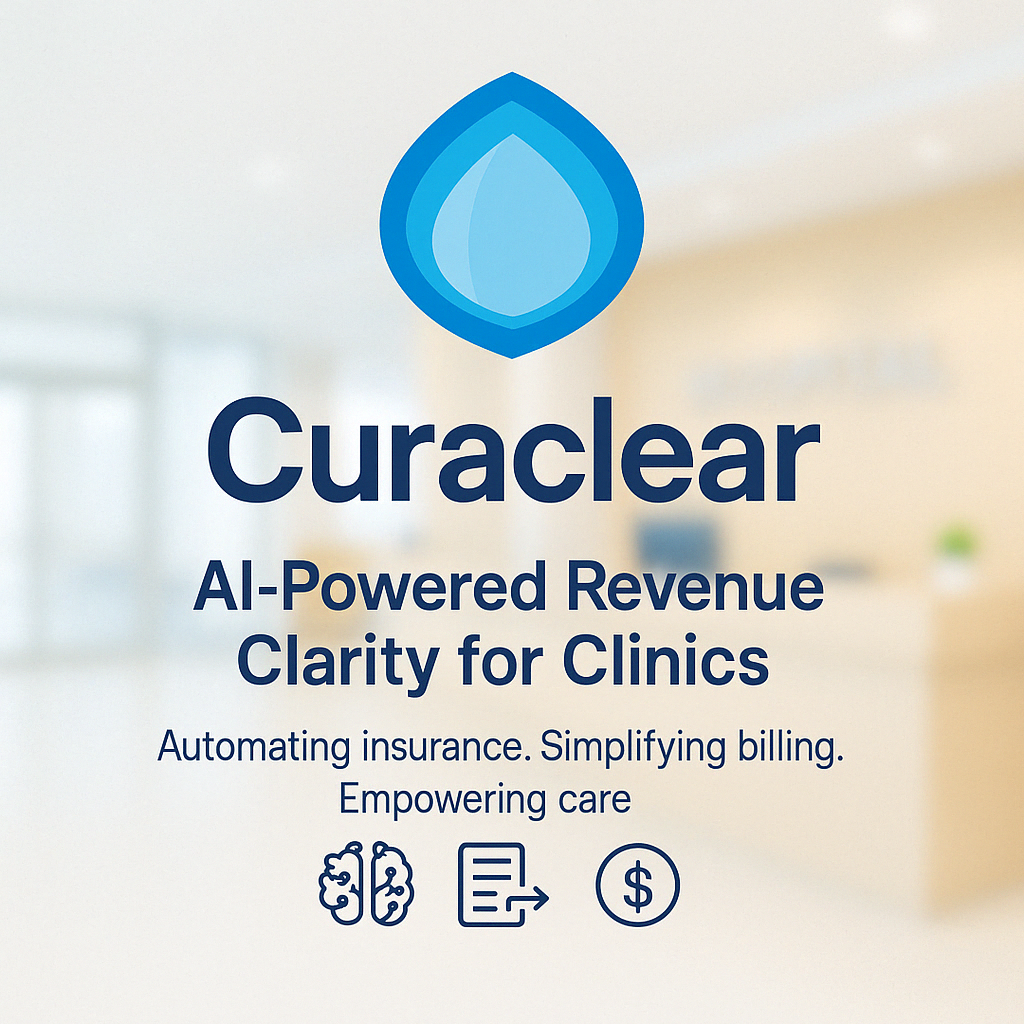
How to Assess a Revenue Cycle Management (RCM) System: The Hidden Costs of Incomplete Payer Coverage
In the increasingly automated world of healthcare operations, not all revenue cycle management (RCM) systems are created equal. One of the most critical—yet often overlooked—criteria for assessing an RCM solution is payer coverage. That is, can the system actually handle the full lifecycle of claims for all your patients, across all your payers?
The reality is that many systems claim automation but fall short when it matters most: when payer-specific workflows become complex, when attachments are required, or when eligibility responses are nuanced. This blog explores the full depth of that issue, why it costs more than you think, and how a layered fallback approach can preserve both revenue and patient trust.
Why Payer Coverage Matters
Let’s break it down: every RCM system interfaces with a mix of patient, provider, and payer data. But not every RCM can handle every transaction type—especially across every payer. For example:
Eligibility Checks (270/271)
Attachment Submission
Claim Filing (837)
Payment and EOB Processing (835)
Some payers might not support direct EDI integration. Others may offer poor documentation or outdated portals. If your system doesn't support a specific payer for a required transaction, the task either fails silently, or worse, falls to a human fallback.
The Real Cost of Human Fallbacks
When automation fails, staff must intervene manually. This can involve:
Navigating complex payer websites
Logging into practice management or imaging systems
Gathering documentation and preparing resubmissions
Calling the payer—often waiting on hold for 30 minutes or more
This work can take 30–90 minutes per claim, depending on the complexity. At a labor cost of $20–$60 per hour, that’s $30–$90 to recover a single $200 claim.
Multiply that by just 5 one-off claims per day, and suddenly you're leaking thousands per month. This also diverts attention away from other high-value tasks like claim optimization, appeal strategy, and patient engagement.
Patient Relationship Risk: The Cost of Inaccuracy
A weak RCM system doesn’t just drain revenue—it can erode trust.
One example: Coordination of Benefits (COB). If your RCM’s eligibility logic or payment posting doesn’t correctly interpret COBs, you might:
Send inaccurate patient estimates
Submit secondary EOBs with PHI from unrelated patients
Miscalculate patient balances
These mistakes aren’t just operational—they’re relational. If you tell a patient their visit will cost $40 and later send them a $120 bill, you’ve broken their trust. Even if the insurance company is to blame, the patient blames you.
Studies show that patients respond much more positively when told an accurate, even if higher, cost up front. That transparency helps preserve long-term relationships.
The Sensitivity of Write-Offs
Another friction point is write-offs. If your system misidentifies contractual adjustments or applies them incorrectly, you may:
Undermine revenue targets
Disrupt collections tracking
Overlook underpayments from payers
While write-offs are a normal part of healthcare finance, they must be calculated accurately and transparently. Overuse or misclassification can make a practice appear unprofitable—and leave revenue on the table.
Secondary EOBs: A Case Study in System Quality
Take secondary EOB processing. For large DSOs, a single EOB PDF might contain dozens of patients. A high-quality RCM platform must:
De-identify unrelated patients' information
Extract only the relevant patient’s data
Format it cleanly for re-submission
If your AI fails here, you’re again sending staff to correct it manually—or risking HIPAA violations. A robust system doesn't just submit claims—it prepares, filters, and contextualizes them to meet payer and compliance standards.
How Curaclear Solves This Problem
At Curaclear, we address these challenges head-on with a multi-layered fallback system. When automation fails, we don’t just hand it off to a staff member—we escalate it through a series of intelligent pathways:
Redundant submission protocols for edge-case payers
Deep eligibility interpretation across payer websites and EDI
Context-aware document generation for attachments and appeals
Live agent escalation, including payer calls when necessary
We also respect web blockers and automation limits, using ethical, secure techniques that stay within compliance. Our systems are built to handle exceptions intelligently—not just pass them off.
Final Thoughts: Assess Your RCM Like You’d Assess a Staff Member
Would you hire an employee who can only handle 80% of the job? Probably not. So why tolerate an RCM system that automates only the easy stuff?
When assessing a revenue cycle platform, ask:
Does it handle all your payers, or just the common ones?
Can it process secondary claims and COB logic reliably?
Does it offer fallback strategies beyond “assign it to staff”?
How does it ensure patient estimate accuracy?
Your RCM should maximize revenue, minimize staff fatigue, and enhance patient trust—not trade one for the other.
Curaclear is your Large Language Model business partner in navigating these complexities—so you can focus on patient care, not paperwork.
Want to learn more? Contact us or schedule a demo to see how we handle what others can’t.
Large Language Models: The New Computing Paradigm
The nature of computation is fundamentally evolving. Today, we're at the cusp of a rare and significant shift, reminiscent of the computing revolution of the 1980s. Back then, we saw the rise of central processing units (CPUs) that operated on instructions using bytes. Now, we're transitioning into a new paradigm driven by Large Language Models (LLMs).
Imagine an LLM as a modern equivalent of the CPU—but instead of processing instructions through bytes, these models operate using tokens, small strings of data. Unlike traditional RAM that handles bytes, we now deal with a context window made of tokens, fundamentally changing how memory and data processing work.
Moreover, just as traditional computing has relied on disk storage and other peripheral hardware, this new computing model has complementary storage and retrieval systems, enabling more dynamic and sophisticated information handling.
The term "LMOS," or Large Model Operating System, was originally coined by Andrej Karpathy to describe this emerging paradigm, where language models function as orchestrators akin to operating systems managing traditional computing resources.
Right now, we're collectively discovering how best to program LLMs, exploring its strengths, recognizing its limitations, and learning innovative ways to integrate it into practical products and services. The next wave of technology will belong to those who master this paradigm, extracting maximum efficiency and functionality from it.
Welcome to the dawn of LLMs—computing reimagined.
From Denial to Payment: How Curaclear AI Streamlines Health Insurance Claims
Navigating the complexities of health insurance claims can be a daunting task for both healthcare providers and patients. Denied claims often mean delayed payments, increased administrative burdens, and frustration for everyone involved. However, advancements in Artificial Intelligence, specifically Large Language Models (LLMs), are transforming this process, making claim submission, appeals, and eventual payment significantly more efficient.
The Traditional Problem with Health Insurance Claims
Historically, health insurance claims submission has been plagued by:
Complex medical coding requirements
High rates of claim denial due to minor errors or missing documentation
Manual review processes that slow down the entire billing cycle
Claims denial not only disrupts cash flow for medical practices but also creates significant inconvenience for patients who face uncertainty and potential financial strain.
How Large Language Models Improve the Process
Large Language Models (LLMs), like GPT-4 and Claude, have the capability to understand, interpret, and generate human-like text based on vast amounts of data. Leveraging these models in healthcare billing offers several powerful benefits:
1. Accurate Claim Submission
LLMs can automatically:
Identify appropriate medical codes (ICD-10, CPT, HCPCS) for services provided.
Check for accuracy and completeness in the documentation.
Verify patient eligibility and insurance coverage prior to submission.
This proactive approach significantly reduces the likelihood of claim denials due to clerical errors or incorrect coding.
2. Efficient Appeal Generation
If a claim is initially denied, LLMs can quickly analyze denial reasons and generate well-structured, evidence-supported appeal letters. By referencing up-to-date medical guidelines, payer-specific policies, and patient history, these appeals become highly personalized and persuasive.
3. Real-Time Claims Monitoring
Integrating LLMs into claims management software allows for real-time monitoring of claim status. LLMs swiftly detect denials or delays, automatically triggering follow-up actions or appeals without manual intervention. This accelerates resolution and reduces administrative workload.
Practical Use Case: From Denial to Paid Claim with Curaclear AI
Consider a denied insurance claim due to "lack of medical necessity documentation." Traditionally, preparing a persuasive appeal could take hours of manual effort. Now, with an LLM integrated into the workflow:
The system immediately flags the denial reason.
It reviews patient records and payer guidelines instantly.
It generates a concise, detailed appeal, supported by precise references to clinical guidelines and relevant documentation.
This appeal is submitted promptly, significantly enhancing the chance for claim reconsideration and eventual payment.
Results: Faster Payment, Reduced Burdens with Curaclear
Healthcare providers adopting LLM-based systems experience:
Dramatically reduced claim denial rates
Faster turnaround on denied claims
Improved cash flow and operational efficiency
Better overall patient satisfaction and confidence
Conclusion: A Brighter Future for Healthcare Billing with Curaclear
The adoption of Large Language Models in health insurance claims management by Curaclear marks a significant step forward in modernizing healthcare administration. Providers can focus more on patient care rather than paperwork, and patients can rest assured knowing their healthcare financial transactions are handled quickly and accurately. As these technologies continue to evolve, the potential for streamlined, hassle-free healthcare claims management grows ever more promising.
Agentic Eligibility Verification
Verifying patient eligibility doesn't need to slow down your healthcare practice.
Curaclear's AI-powered eligibility verification instantly confirms patient insurance details, preventing claim denials and significantly reducing administrative overhead.
Experience real-time accuracy, seamless integration with your existing systems, and increased revenue certainty.
Streamline your workflow and enhance patient satisfaction—discover Curaclear today.
#EligibilityVerification #HealthcareAI #RevenueCycleManagement #Curaclear
AI Powered Claim Denial Appeals
Claim denials are costly, time-consuming, and frustrating—but they don't have to be.
Curaclear leverages advanced AI technology to meticulously analyze denied claims, automatically draft effective appeals, and manage resubmissions seamlessly. Our platform ensures you recover more revenue faster, without burdening your administrative staff.
Optimize your appeals process with AI precision and keep your practice financially healthy.
Ready to see the difference? Connect with us today!
#AIinHealthcare #RevenueRecovery #ClaimsManagement #Curaclear
Agentic Computer Use
Imagine if repetitive computer tasks could be handled effortlessly, freeing your healthcare staff to focus on patient care. That's the power of Agentic Computing with Curaclear.
Our intelligent agents automate routine desktop interactions, accurately handling data entry, claim submissions, and eligibility checks without manual oversight.
Boost productivity, reduce errors, and empower your team to deliver exceptional care.
Curious about how agentic computing can transform your healthcare practice? Let's talk!
#AgenticComputing #Automation #HealthcareTechnology #Curaclear
Optimizing Healthcare Workflows
Healthcare providers spend too much time chasing payments and dealing with denied claims. Curaclear is changing that.
Our AI-powered platform transforms Revenue Cycle Management (RCM) by automating eligibility checks, streamlining claims submission, intelligently analyzing and appealing denied claims, and optimizing payment posting.
The result? Clinics spend less time on paperwork and more time focused on patients.
Discover how Curaclear can boost your clinic's financial efficiency and enhance patient care.
#HealthcareInnovation #AIinHealthcare #RevenueCycleManagement #Curaclear







